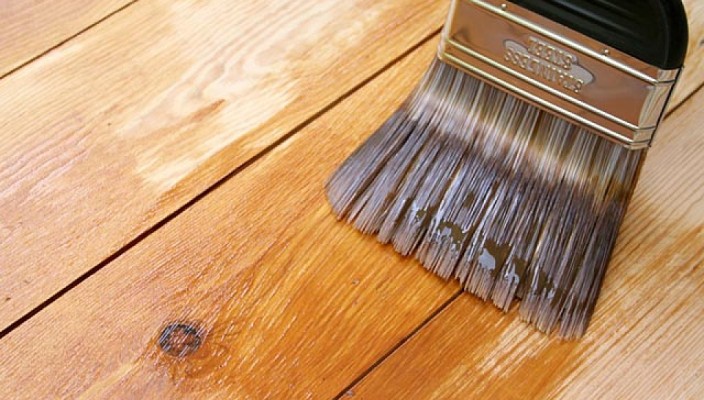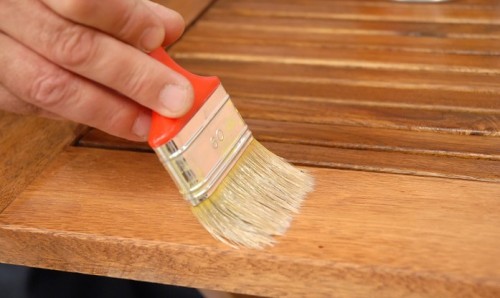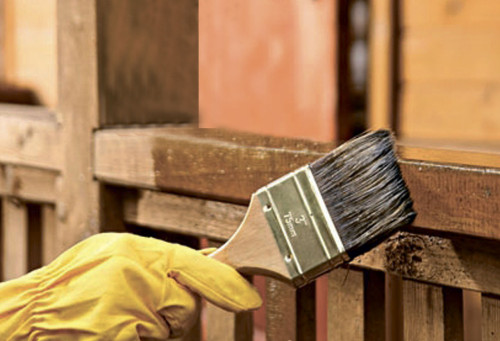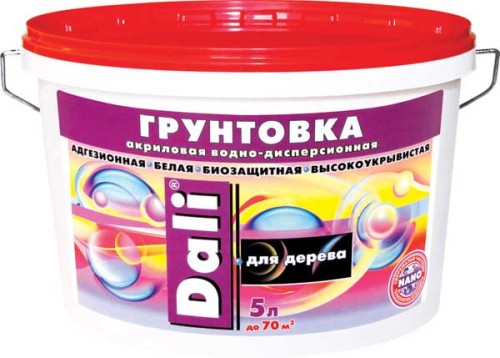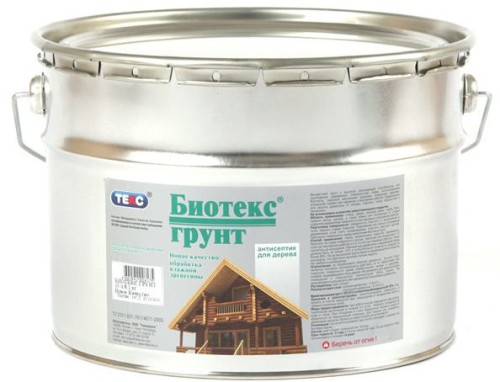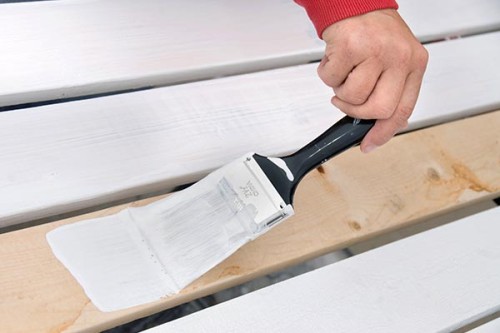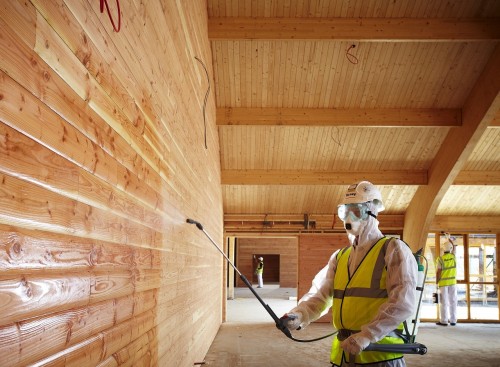As one of the most sought-after materials used for the construction and manufacture of furniture, the tree traditionally protrudes. The stable popularity of wood is due to the numerous advantages of this natural material. At the same time, the tree is quite capricious in care and operation, so the technology of its processing is constantly being improved. The priming made before painting will allow you to noticeably simplify and reduce the process of finishing wood, and will also help extend the life of this material.
Content
Tree Primer For Tree
Any homeowner periodically arises the need for painting outdoor wood structures, as well as furniture and elements of the interior made of wood. At the same time, the duration of their further operation will largely depend on the quality of finishing materials, as well as their proper use. Before painting wood, in most cases it is necessary to pre-priming the surface.
Depending on the placement and conditions of operation, the designs of wood to one degree or another are influenced by various negative impacts that can lead to damage and destruction of wood. These include:
- atmospheric precipitation, as well as increased air humidity - under the action of these factors, wood swells and deforms, the fungus and mold multiplies on it, rotting is developing;
- direct sunlight entering the burning of the wood surface. In addition, due to temperature effects, this material can dispel and crack;
- insect pests - in the form of a variety of wood beetles, capable of damaging and destroy the most durable wooden structures.
Advantages of using the primer for wood
Tree primers have wood-reinforcing wood properties, preventing its damage and ensuring a more reliable grip with a layer of paint. Due to the priming, the finishing coating will be held for a long time, not peeling. It is worth noting that the price of the wood of the tree is significantly lower compared to the cost of paint, so the savings on priming in most cases is hardly inappropriate. Some masters mistakenly believe that the blasting for the tree can be replaced with a layer of paints with the added solvent, but it is not so - as a result of this processing, after painting, it is possible to get a decoration of a much worse quality, moreover, thanks to the excellent absorbent ability of the wood, there will be a significant consumption of material.
The advantages of using primer for wood should include:
- its ability to penetrate into the layers of the material being processed, soaking and hardening them. In this way, you can give a greater density of old breathing wood. Tree primer for outdoor work penetrates wood deep, filling the pores and small cracks, and effectively prevents its destruction under the action of high humidity;
- as a result of the priming, the absorbency of wood materials decreases, since the natural wood in its structure resembles a large-porous sponge, which actively absorbs the original layer of the dye. It should be noted that the wood primer is characterized by a significantly lower cost compared to various kinds of paint. Thus, with the help of pre-priming, it is possible to significantly reduce the consumption of paint;
- the antiseptic components of the composition have a disinfecting effect - with the help of such priming it is easy to prevent or eliminate the appearance of mold and the subsequent rotting of wood, as well as protect it from damage to pests-insects. Especially relevant application of this kind of protection, if the stained object is on the street.
It is worth noting that with the help of primer for a tree under painting, you can create a separation and protective layer for previously painted wood, which will be required if the initial and subsequent color will differ in color. In addition, natural wood contains a natural dye (tannin), which can manifest itself in non-psychic divorces through a layer of water-soluble paint. Applying the primer for a tree under painting, you can protect yourself from such phenomena with further trim. To obtain a qualitative result of staining, it will be necessary to pre-process wood under painting with the appropriate composition for outdoor or internal works.
The following wooden structures are most needed to paint under painting:
- outdoor - fences, frame frame, doors, roof elements subject to adverse atmospheric effects and temperature drops;
- placed in rooms for which the mode of high humidity is characteristic, as well as structures in contact with the outer walls;
- if there is an increased probability of injury to insects.
Dimensions for wood
Mastics and impregnation for wood include in its composition film-forming substances (resins, oils, bitumen or glue), as well as components in the form of plasticizers, pigments, etc. The assortment of primer for wood is quite wide. To obtain the optimal result of the further finish, it will be necessary to choose and buy a primer on the tree of the most suitable composition.
The following varieties of soil for wood are available:
- alkyd - This primer is used under painting by wood alkyd enamels like PF-115 and its imported analogues. In terms of composition, such a soil resembles enamel, but includes a greater number of organic solvents and cheaper pigments. Alkida primer perfectly lies with one layer, while creating a water-repellent coating, dries for 10-15 hours, it can be used, diluting with water;
- acrylic - penetrating water-soluble soil of this type (based on acrylic resins) is universal, as it is suitable for basic wood processing under various types of paint, almost completely absorbed deep into the treated material without the formation of a visible film on the surface of the tree. Acrylic primer for wood is usually applied in 2-3 layers. This type of soil does not have a sharp specific smell, dries in a few hours;
- silicon-acrylic soil fills the pores of wood, strengthening it and creating a durable hydrophobic (water-repellent) layer. Such primer is suitable for the preparation of the base surface from the tree under staining with dispersion, alkyd, latex paints;
- polyurethane and epoxy primers based on polyurethane or epoxy resins can be used as a base for finishing with various varno-colorful materials. These types of soil in their composition are reminiscent of varnish, but in contrast to it, they include a greater number of special solvents and do not contain tinting additives. When buying such a primer, it is recommended to carefully read the list of its components indicated on the package, since the variations of the soil from different manufacturers can differ significantly to the composition and consistency;
- shellakoy - This type of soil is intended for reliable insulation of bitch on sections of softwood wood. Such a primer neutralizes the effect of the resin released material, which may violate the appearance and structure of the finishing coating. Shellak soil can also be used as an insulator for water-soluble verses;
- antiseptic - due to its composition, this type of soil has disinfecting (fungicidal, pesticidal) and other useful properties. Such priming is used to prevent and eliminate wood damage processes with various types of fungus and mold, as well as to protect the tree from damage by various pests-insects (in the form of a row, a variety of vertoon beetles);
- oil - such a soil is used for previously painted surfaces or as a base under the subsequent color (for this it is enough to apply one layer of soil);
- olife - traditionally used as a soil under the coating with oil paints for external and internal works. This impregnation penetrates several millimeters deep into wood, providing reliable protection against the influence of high humidity and roting, as well as a durable grip of oil paint with a base surface;
- styric soil is used to create a film on wood surface protecting the wood material from rotting and destruction. Such primer that increases the adhesion of finishing materials with a base surface is used under the painting of wood with oil-phthalic and alkyd enamels.
When choosing a material for priming, it is necessary to be guided by the conditions for conducting the work to which include:
- placement of the treated surface (indoors or on the street);
- humidity and air temperature;
- you have time for processing wood.
How to Protect Tree under Painting
Before using the wood primer, you should carefully read the instructions from the manufacturer to actually act in accordance with its instructions. Before applying, the primer composition will be needed to be carefully mixed within a few minutes - in order to highlight all the pores and microcracks of the tree, the primer layer must be sufficiently fluid.
Before priming it is very important to properly prepare wood. It will take carefully removed from its surface dust, dirt, bitumen, fat stains, peeling the old finish and foreign items like nails and screws. For these purposes, you can use a rigid wire brush or a professional tool for grinding a tree. In the end, it will be necessary to prepare a homogeneous smooth and solid base surface under primer. For applying the soil, a brush is used, a pulverizer or a greasy roller.
When performing priming it is worth considering the following features:
- this processing must be carried out at low air humidity and a temperature of 5-30 ° C. It is necessary to take into account that in the heat the primer can evaporate too quickly, not having time to soak wood with high quality;
- with the application of a larger amount of soil layers, the impregnating composition, respectively, penetrates the inside of wood. At the same time, it is not necessary to use the most expensive types of primer - increasing the number of layers, it is easy to achieve high quality processing;
- to reliably protect the wooden structure from the effects of dampness, it is necessary to cover the hydrophobic soil completely and without skipping the surface of all its elements;
- for the processing of plywood, the Fiberboard or chipboard it is necessary to use the compositions of deep penetration. For example, to prepare such a basic surface under painting acrylic paints, an acrylate primer ticcuril for wood is suitable. It is worth considering that due to the considerable porosity of these materials, it will be necessary to apply several soil layers;
- to process bitch on sections of the surface of the wood of coniferous breeds, it is necessary to remove the metal spatula from them allocated to the resin. If you have a newly separated resin, the knots should be warm up using a thermal system and collect resin again. Next, it will be necessary to thoroughly clean the surface with sandpaper, and then erase the dust with a tissue napkin with a solvent applied. After that, the bitch is coated with insulating soil, neutralizing the penetration of the resin into the finishing coating.
When conducting finishing works, it should be remembered that the carefully performed priming of wood largely determines the quality of the painted surface and the durability of the wooden structure as a whole.

